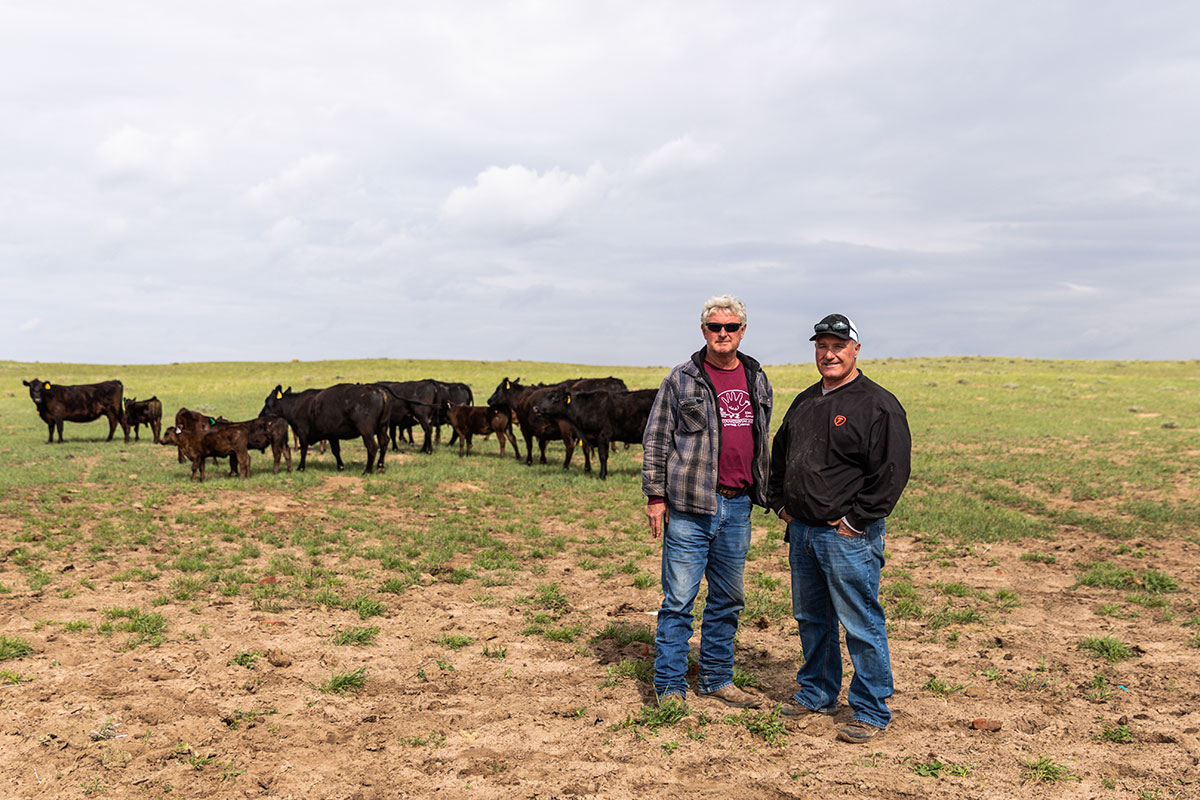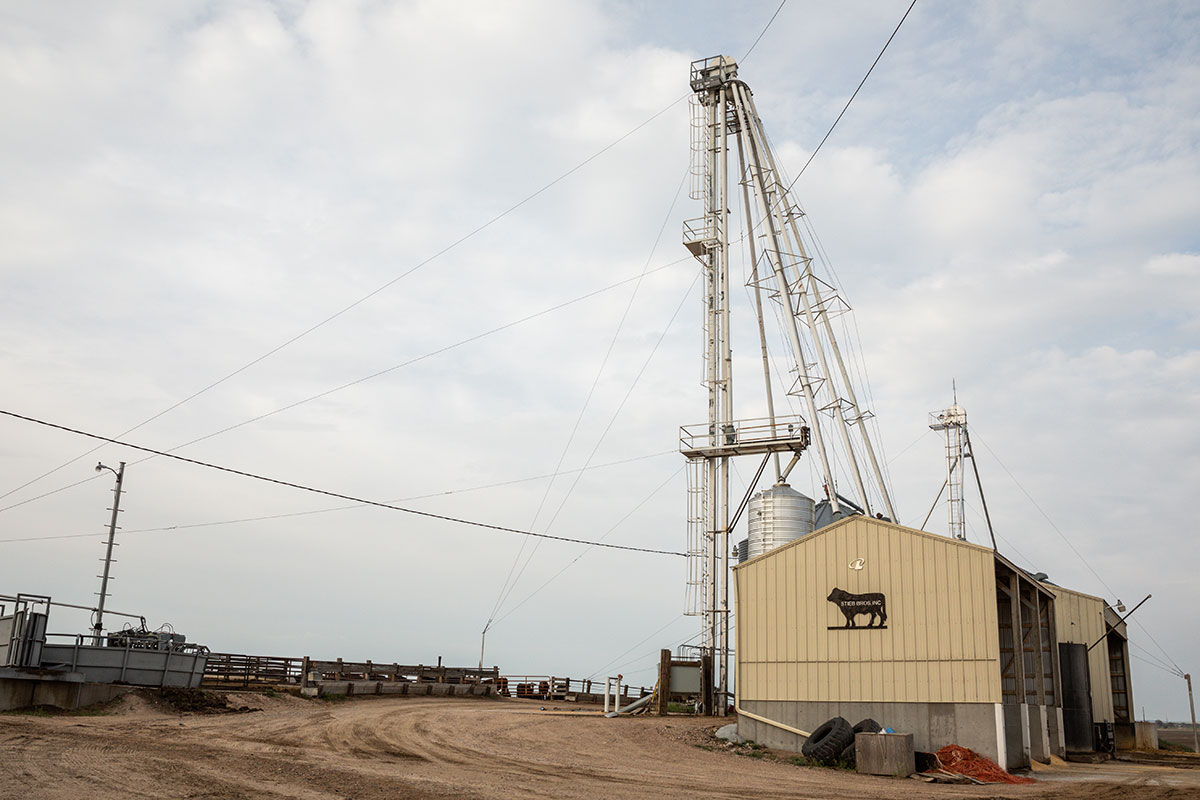
The price is right
Colorado farmers know the value of their cattle, start to finish
By: Morgan Marley
At the headquarters of a farm situated between its irrigation circles west of Iliff, Colo., coffee is brewing in the Stieb Brothers Feedyard office. The daily 9 A.M. meeting is about to start.
With no typical day or agenda, each of five team members begin by comparing “headaches” and inviting discussion on plans for handling them.
It all started as a crop farm with feeding pens and evolved into a diversified ranch with plenty of chores to go around.
“We didn’t even have cows back when we were in college,” Leo Stieb says.
For sure, no cows stayed for a whole year back in the 1970s and early ’80s.
“If we did have cows, we’d buy them after we got our crops out and just calved and sold them,” he says. “We never kept a herd.”
The feedyard was stocked solely with calves from auction barns.
A generation before, the Stieb Brothers had grown capacity from 500 to near 2,000 head. Today, cousins Leo and Don have room to feed 3,000.
“That’s about how much feed we could supply,” Leo says. “We never fed for anybody else, but now we’ve had to start that to build up more income.”
In the 1990s, the family began to buy heifers out of artificially inseminated (AI) cows of any breed. It was time to build a keeper herd.
Like most decisions, adding a permanent cow herd to the mix was price driven.
When they were just buying whatever was cheapest at the sale barn, it helped justify a few higher bids if they knew where cows came from.
“But when they started costing $2,000 to $2,500, we decided we better start raising our own,” Leo says.

The added complexity and scale of more and expanding enterprises takes more hands to get the jobs done. Now including the cousins, there are five full-time and another three part-time employees in the summer.
“We raise all the grain ourselves,” Leo says. “That’s our big thing. Now, we’re gonna have to start buying some because we’ve added on so much.”
The 2,500 irrigated acres can’t grow enough corn, wheat and alfalfa for the hungry mouths they have to feed.
“Pasture’s getting hard to grow,” he says. “That’s why we started the irrigated grass, and it’s worked pretty well for us.”
As time went on, the cousins began upgrading their herd by retaining only AI-sired heifers from registered Angus bulls. Progeny were evaluated by performance in the home feedyard and at a nearby packing plant.
“We know the quality we’re getting now,” Leo says, emphasizing the need for ever higher quality bulls.
They don’t have to go far to find them. For four years they’ve bought bulls from Walter Angus near Hudson, Colo.
“He really sees the value in genetics, especially from Angus,” Ty Walter says. “Rarely do people who retain ownership actually feed their own calves. So Leo knows that carcass traits are important for his return on investment.”
A mix of red, white and black cattle still roam the eastern Front Range, but Angus covers the majority.
When you calve out nearly 800 cows, you don’t want a lot of problems, the cousins note. Angus maternal instincts and reasonable calf size make it easier on cattle and people.
“We don’t want any 100 pounder; 80 pounds is really pretty good,” Don says. “I don’t like pulling calves.”
Other improvements to the herd come from keeping younger cows. What used to be 10 to 12 years had changed to no more than 9 years in production.
Once they get through calving and planting crops, summers are spent tending irrigation lines and moving cattle around to grass. The day cows and calves first go out to pasture is a favorite day, relieved that the calf crop has literally found room to grow. They’ll stay on grass until weaning at 500 to 600 pounds.

From there, the sorting begins with an initial split according to sex. Performance differences create later opportunities for sorting until the ultimate, choosing animals at optimum finish. When calves appear ready to head to Cargill in Fort Morgan, the fattest ones are picked off for a first load. All are sold on a value-based grid, but judging their best-value timing is all based on visual appraisal and decades of experience.
“In one load, we had 91.25% Choice, which paid back $13 a head in premiums,” Don says. At the time, cattle at the plant were averaging 65% Choice. Typically, more than half of each pen makes it into the Certified Angus Beef ® brand, with nearly 18% grading Prime.
Marketing on the grid started when they began raising their own replacements. At first, the cousins weren’t focused on Angus.
“But the premiums were better,” Don says, “so we made the change.”
Tying everything together that goes into farming, ranching and feeding can be hard work. But when it’s all you know, the cousins agree, it’s all you really want to do.
“You see a lot of people that don’t work near as hard and make a lot more money,” Leo says. “I don’t know if they’re as happy as we are.”
Originally ran in the Angus Beef Bulletin.
You May Also Like…
Nebraska Ranch Receives Certified Angus Beef Commercial Award
Troy Anderson, managing a Nebraska ranch, focuses on breeding thriving maternal cows that will grade premium Choice and Prime, while respecting livestock, people and land. Anderson Cattle receives the 2023 CAB Commitment to Excellence Award. Their journey includes improving genetics, feeding home-raised and purchased calves and using data for better breeding decisions, all with a bottom-line approach.
Magnum Feedyard Earns Certified Angus Beef Award
While Magnum hasn’t always had pens filled with Angus-influenced cattle, they’ve invested in infrastructure, improved quality-based marketing and sought better genetics. Their dedication to detail and employee appreciation drive their success to high-quality beef production.
Everything They Have
Progress is a necessity on the Guide Rock, Nebraska, ranch where Troy Anderson manages a commercial Angus herd, small grower yard, his 10-year-old son, and a testing environment. Troy’s approach includes respect for his livestock, people and land. For that, Anderson Cattle was honored with the CAB 2023 Commercial Commitment to Excellence Award.



